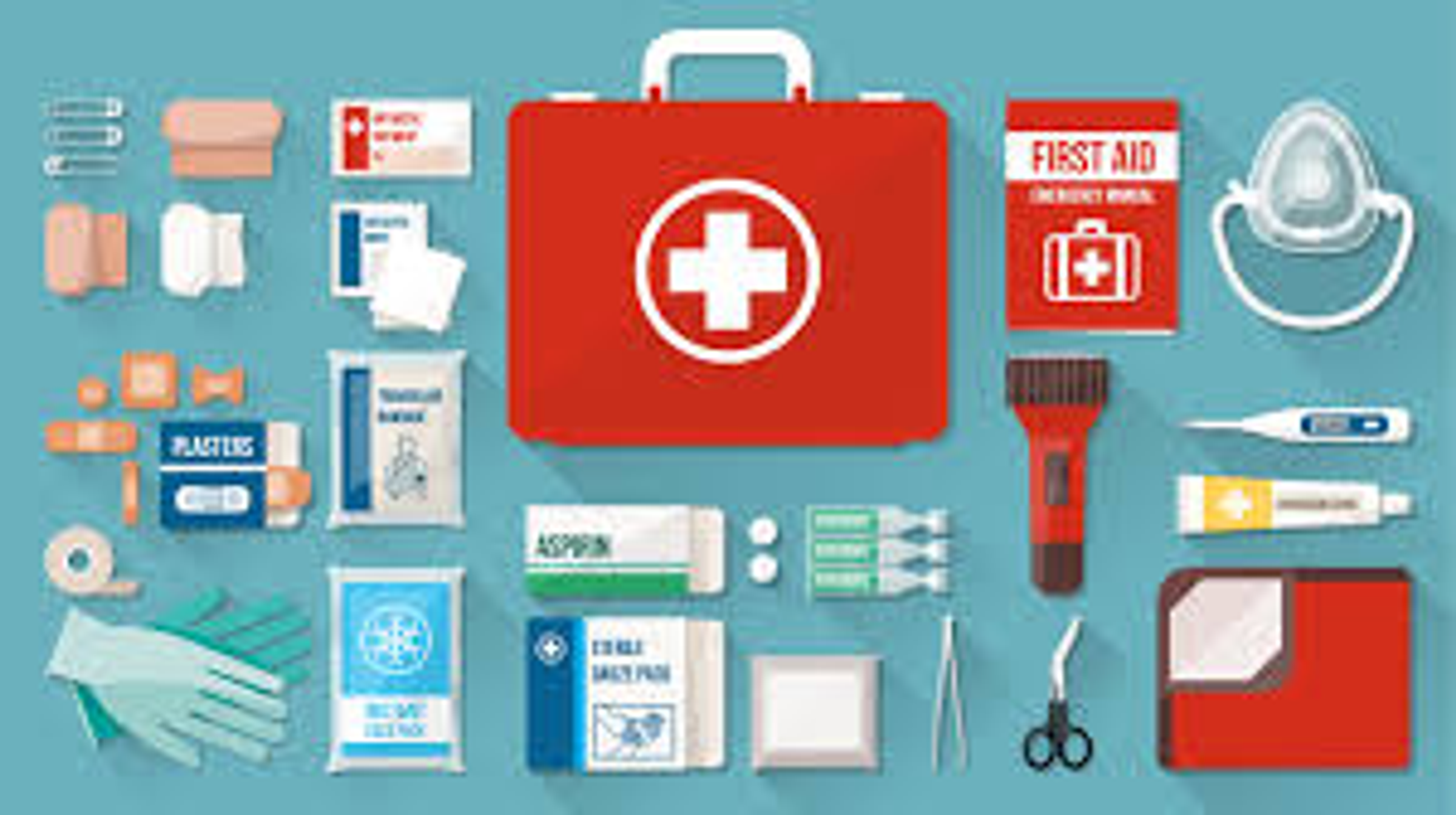First Aid

FIRST AID PROCESSES
- First aid is for employees, students and visitors who suffer injury or illness while at work/school.
- First aid is the initial care of the ill or injured. The school provides basic first aid facilities and first aid kits for excursions, sport and camps.
- School staff are rostered to provide first aid assistance each recess and lunch time.
- School staff are not expected to diagnose or medically treat illness. This can only be done by a medical practitioner. Staff are expected to provide the duty of care required of school employees. Basic procedures will be explained to all staff during the school year.
- Staff must be aware of taking reasonable care with regard to their own personal safety in carrying out first aid. Surgical gloves are provided for staff to use.
- Student records are maintained to facilitate appropriate contact with parents/guardians.
- It is illegal for a workplace to supply painkillers to staff or students.
- The school complies with Workplace legislation on the number of staff with Level 2 First Aid. Each 3-6 unit is to have a Level 2 first aid trained person, in order to fulfill camp requirements.
- All staff will be trained in CPR and Anaphylaxis – a refresher/update to be organized every year.
Students who require first aid
- Teachers to treat minor first aid needs in the classroom using the first aid kit that is shared between double classrooms. Each classroom also has a bum bag with basic first aid supplies which can be used when the class is outside.
- If a student complains of feeling unwell and the teacher is unsure of the veracity of their complaint (no obvious signs/symptoms or they are a known malingerer), the student is to rest in a quiet part of the room. If the student’s condition deteriorates, they are to be sent to first aid with a First Aid Referrals note and their bag. The staff on First Aid will phone the parents/guardians/emergency contact to come and collect the student. The staff on First Aid will also inform student’s siblings in other grades.
- If a student has been injured or is bleeding during class time (other than a scratch or light graze), they are to be sent to First Aid with a First Aid Referrals note and the First Aid staff will attend to them and take appropriate action. The staff on First Aid will notify the home group teacher if the student is to be sent home.
- If a student has been knocked in the genitals or received a head injury– First Aid attendant to phone parents to inform them.
- If a student complains of feeling unwell or in need of First Aid during recess and lunchtime, the yard duty teacher has a supply of wipes and bandaids in the bum bag that can be used or given to the student to use. Only serious cases are to be referred to First Aid.
- During recess and lunchtime the First Aid attendant contacts parents/guardians/emergency contact if the student is to be sent home. Where practical and possible, First Aid attendant to confer with the home group teacher (regarding the student being sent home), prior to contacting parents/guardians/emergency contact. At recess and lunch, the First Aid attendant will make an entry on Compass.
- If it is a serious injury, an Injury Report form is to be completed by the staff member who brought/sent the student to First Aid. First aid staff may need to find out the details if yard duty staff are unaware of accident details.
- If a student receives a minor injury, a MINOR injury form is to be filled in by the person who administered first aid. If a parent is contacted by phone, no form is required. If a child returns to the playground or their home group, a form is required – child to be given form to pass onto their parent/s.
- When a student has been sent home through sickness or injury, the home group teacher is to follow up what medical treatment was given and whether it was by a medical practitioner or hospital.
- The light switch is to remain ON when there is a student in First Aid during class time, as this activates the RED light in the office. When a student is waiting to be picked up, they sit in the foyer chairs, unless they are too ill and then they wait in the First Aid room.
Students who are ill
- Sick or injured students who are unable to return to class will normally be sent home with parents/guardians or emergency contacts. Persons collecting students are required to complete the sign out details in the office.
- Students who are obviously not well should not be sent to school. There is an exclusion list for contagious disease.
Ambulance
- In the event that a student is seriously injured and requires treatment beyond basic first aid, parents/ guardians or emergency contacts will be informed of the situation. If parents are unable to collect the student within a reasonable time, as determined by the Principal or Assistant Principal, then an ambulance will be called.
The student’s welfare and pain relief will take overall priority.
Further diagnosis and treatment will be the responsibility of ambulance officers. All parents/guardians are strongly encouraged to have ambulance cover.
Records
- Emergency contact records are required on enrolment at the school, updated for Preps during the PEAP interviews and updated for years 1-6 students at the first student review meeting of the year entitled, ‘Introducing My Child’. Parents are also requested to update information via regular messages in the School Newsletter.
- Major accident reports are sent to DET via the office computer and minor accident reports are kept at the school.
- Frequency and location reports with preventative action will be generated.
- A list of asthmatics and students with known medical problems/allergies, as per the enrolment form, will be kept in the First Aid room and information is also recorded on each student’s ‘Student Information Full Details’ form in their classroom file.
Life threatening illness of an ongoing nature
- All issues to do with ongoing treatments, queries or processes to be referred to the appropriate student wellbeing staff: Preps Hollie Winfield (Support Leanne Weston), Year 1 Lauren Heath (Support Julie Nixon), Year 2 Linda Philippedis (Support Alison Devereux), Year 3 Scott Jessup (Support Jo Creed), Year 4 Stephanie De Cata (Support Jo Creed), Year 5 Diana Mitrevski (Support Kristy Caruso/Claire McInerney), Year 6 Nicola Holmes (Support Kristy Caruso/Claire McInerney).
- A treatment plan or ASCIA Action Plan for Anaphylaxis or Allergy is to be provided by the student’s medical practitioner – a copy to be placed in the student’s medicine bag and another copy to
